Why Investing in Video is Essential to Hybrid Work
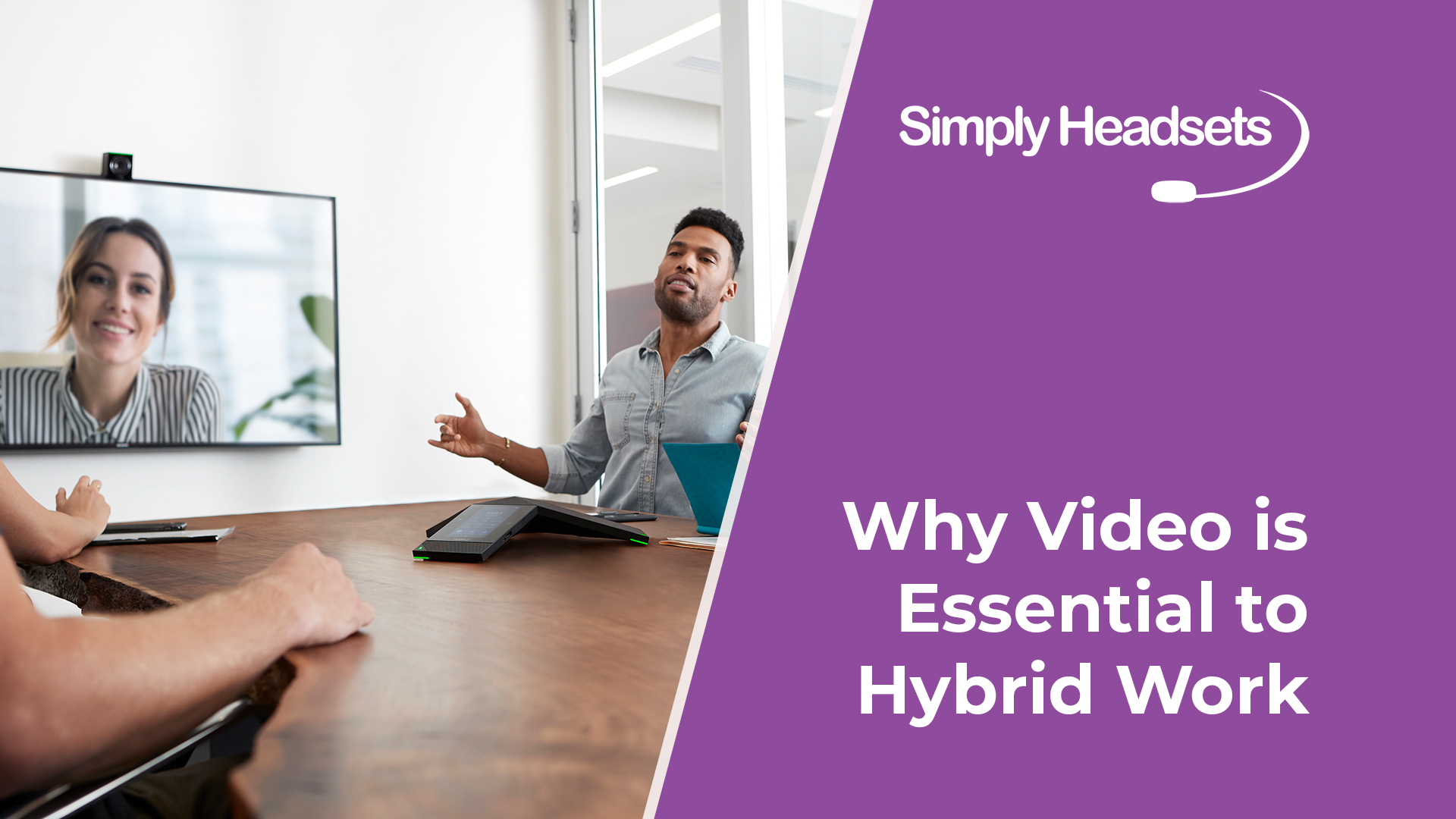
In recent years video has become an essential tool for hybrid work. We're going to dive into how using video improves human connection and collaboration in the workplace, and we’ll discuss how video conferencing can elevate your working experience.
You’ll also discover ways to improve video conferencing aspects to make your hybrid working journey even better.
First, though, we’ll delve into what hybrid working is all about.
Post Contents [hide]
- What is hybrid work?
- How remote work brought video into the mainstream
- How video facilitates human connection in the workplace
- How video improves collaboration in the workplace
- How video conferencing solutions elevate the hybrid working experience
- Ways we can improve meeting equality with video conferencing devices.
- 4 Things to look for in a video conferencing solution
- Browse our full range of video conferencing solutions
What is hybrid work?
In its simplest form, hybrid work is when an employee splits their time between the home and the office. It could be that they choose which days they come to the office, management decides for them, or a mixture of the two. It's hard to define the specifics, because hybrid working, in its essence, has an emphasis on flexibility. So, what works for one person or organisation may not work for the next.
One thing is certain: how we look at traditional job roles has fundamentally changed. Many workers have discovered that being productive doesn’t mean that we must sit within the four walls of a corporate office.
Some factors that have contributed to this are less time spent commuting, the ability to work from anywhere and a better work-life balance.

How remote work brought video into the mainstream
Remote work has been around for decades. But it has been pushed to the forefront of the working experience in the last two years. Since the global pandemic in 2020, Platforms like Zoom and Microsoft Teams have experienced the kind of growth that no one saw coming. From April 2020 to April 2021, Teams grew from 75 Million daily active users to 145 million, and using Zoom became standard practice for many workplaces worldwide, with the platform now hosting over 3.3 trillion meeting minutes globally.
The result of this is that video has become essential to an integrated hybrid working experience and is here to stay. Businesses need to use and adapt to video technology to stay connected amidst the rise of hybrid and remote working.

How video facilitates human connection in the workplace
Everyone wants to feel connected. If the pandemic taught us anything, it’s that face-to-face video calls to loved ones or teacher-to-student calls were the next best thing to communicating with someone in the same room. The same is true for workplace connections. People need to see other people to feel connected.
It’s proven that messages conveyed during video conferencing are more effective and engaging. It isn’t easy to express emotion through text messages or email conversations. While phone or voice calls can sometimes be adequate, messages can often be misunderstood, and because of this, the duration is usually longer than a video call.
Considering that body language and facial expressions make up more than half of our communications, it makes sense that video calls are more effective. Plus, almost 50% of employees consider video the most effective communication form. These statistics make it easy to understand how critical human connection is in the workplace and how video plays a significant role in facilitating that connection.
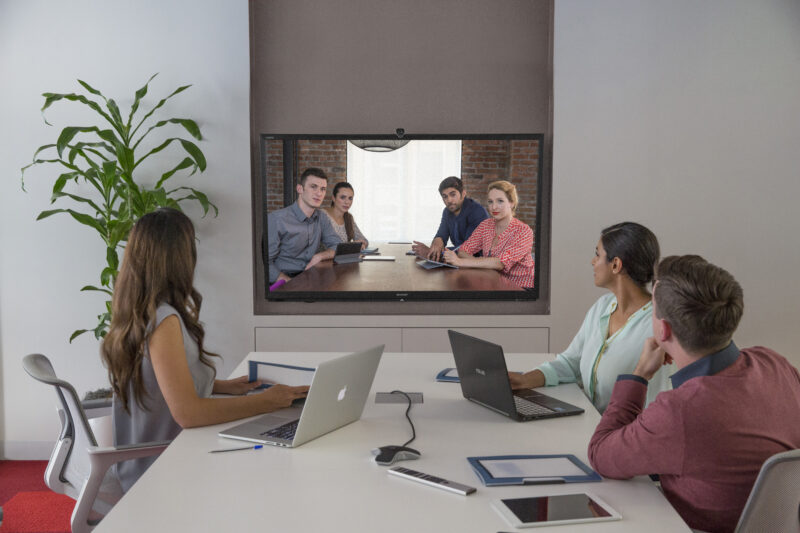
How video improves collaboration in the workplace
Teams that collaborate are more productive and innovative. They have more trust in each other, a shared comprehension and a better understanding of their organisation's strategic direction. When you add video to the collaborative experience, you ensure that your team can deliver the best results.
The data suggests that video is essential for successful collaboration when working remotely or with a hybrid team. When the video is turned on, it ensures that verbal cues and nuance in body language are considered. Video also increases work colleagues' empathy. Empathy matters in workplace communications more than most people realise.
There’s a reason some think that it is acceptable to belittle or criticise people they have never met on online platforms. They have no connection with them and can be anonymous, making it hard to empathise. We can say a similar thing for email communication. While it has its place, we can pick up the intricacies in conversation much better with verbal communication and even more so when video conferencing.
According to video conferencing statistics, employees who don’t use video are 2.7 less likely to feel connected to company strategy and 3.2 times more likely to say they’re unhappy with their current company. To some, video conferencing was such an essential collaborative tool they said their hybrid working experience was unsustainable without it.
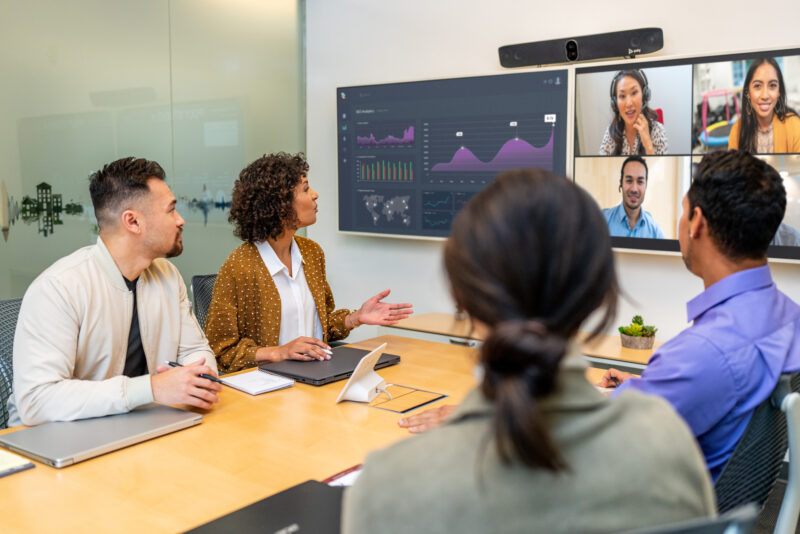
How video conferencing solutions elevate the hybrid working experience
The statistics regarding the benefits of video conferencing speak for themselves. But there’s much more involved in the hybrid working experience than simply spending your time between the home and office. Suppose you aren’t prepared with suitable audio-visual equipment like cameras, microphones, headsets and displays. In that case, you will not gain much joy from the overall experience, because each plays an integral part in your hybrid journey.
Not only will you have to ensure that you’re using the right audio-visual gear, but you’ll also need to adapt it to your circumstances. Your working environment will also need to be considered. For example, you may need face lighting or a personal video camera if you work in a darkened office. If you are often out of your home or office and work from different locations, an external video device will give you a higher-quality video experience. External devices will provide you with the freedom to move away from the built-in cameras that are part of your laptop or smartphone.
A personal video camera can help address many of the issues caused by poor quality video and will make the hybrid work experience less frustrating and much more rewarding. It will reduce video fatigue and help you look your best.
Your headset choice is also critical. For example, if you use Microsoft Teams regularly, choosing a Teams Certified headset will elevate your Teams experience because of their integration and functionality within the app. If you use Zoom or Skype, a range of compatible headsets will improve your hybrid working experience. Audio-visual aspects contribute to much of your hybrid working experience. It’s critical that you get these aspects right.
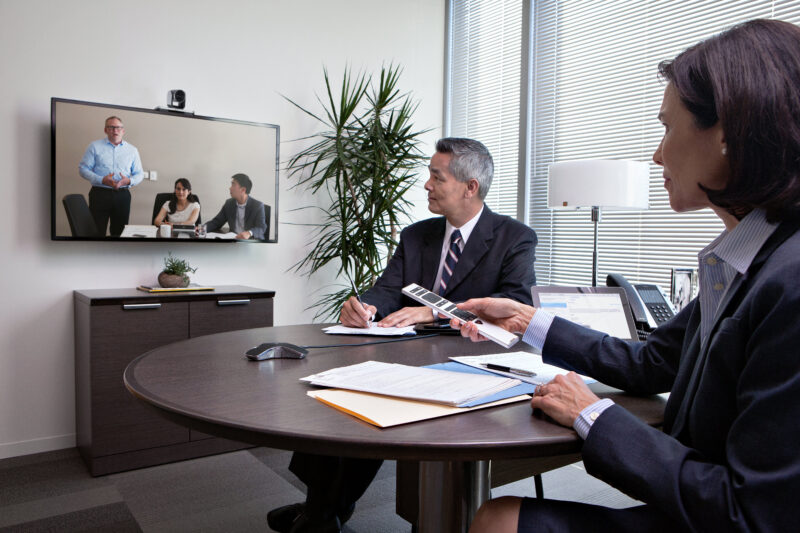
Ways we can improve meeting equality with video conferencing devices.
How is it possible to ensure that everyone in a video conference gets an equal say? To give a professional and consistent meeting experience for everyone involved, it is vital to consider the impact that the audio and video equipment is having on all users in the meeting.
One side effect of hybrid work is that remote or work from home employees are concerned about not having equal opportunities compared to people working in the office. Many employees say they would rather work from home but are afraid that their career would suffer as a result.
Meetings designed for both in-person and remote participants
The future of hybrid work risks being highly unequal unless we use the right technology and strategy to bring everyone on equal footing, whether they are working from home, working remotely, or in the office.
This means making sure everyone’s voice is heard and their ideas are valued, whether they are in the office or not. Thankfully, video can help make everyone feel included, no matter where they are, and it can give employees equal opportunities and screen presence.
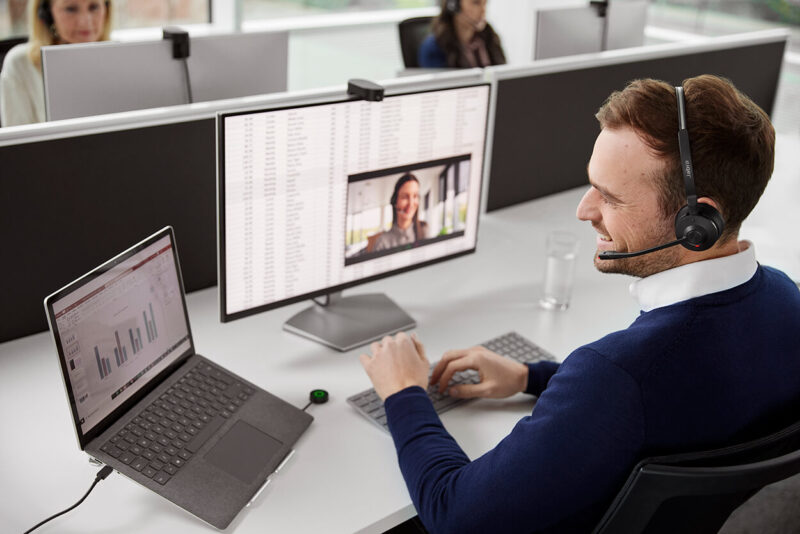
Ensuring equal pixel real estate
We refer to this as ‘pixel real estate’, which is the amount of space an individual takes up on the screen in a video conferencing meeting. This wasn’t an issue back when we were all working from home and joining virtual meetings from our laptops and home computers.
But now, with people returning to the office, more meetings have a mixture of in-person and remote participants, so we must ensure that the people not in the office are represented equally, no matter where they are.
Capturing everyone in the room
It’s not just the remote workers at a disadvantage in virtual meetings, in-person participants feel it too. They’re often sitting too far from the camera, or sometimes not even in the frame at all.
Cameras with a wide field of view can ensure that everyone in the boardroom is captured on screen. While cameras with AI technology can intelligently zoom in on individual speakers and pan around the room to ensure a perfectly directed meeting. This is just one of many examples of how video technology can make sure that no one is left out in a meeting.
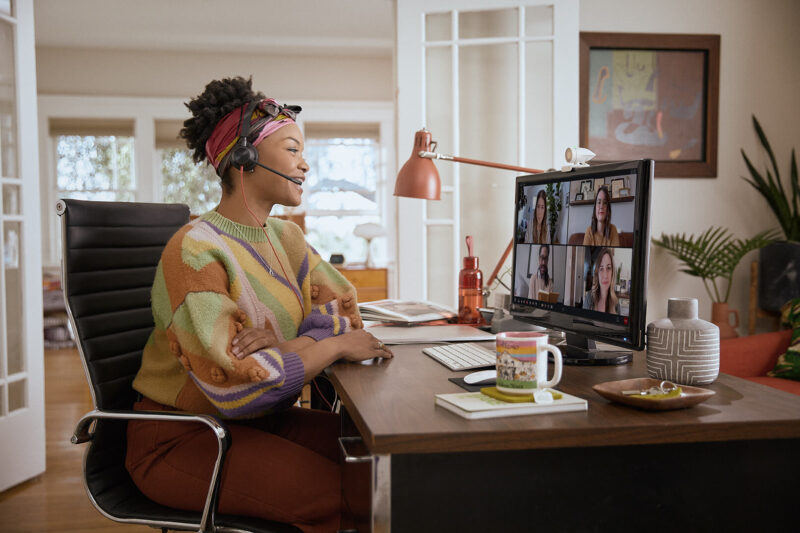
Bringing whiteboards into the future
And let’s not forget the whiteboard elephant in the room. The whiteboard is a favourite boardroom tool for collaboration and brainstorming and people back in the office are no doubt making use of it again. But how are remote employees supposed to write their ideas down on the whiteboard?
To bring the physical whiteboard into the virtual world, companies can use touch screen collaboration whiteboards, where you can share your ideas in real time, so everyone can see and contribute to what’s on the board, no matter if they’re in the room or not. And best of all, you can save your sessions whiteboard ideas and share them electronically with everyone. So no more great ideas will be forgotten or erased
Ensuring that everyone is seen and heard
Staff feel isolated if their audio constantly drops in and out or they have sub-par video quality. And that has a flow-on effect, meaning that they may not address their issues and concerns on the video call, and they won’t be heard as much as their colleagues who are having a better audio-visual experience.
Having a unified communications platform ensures that we can hear all conferencing participants equally and will allow everyone the chance to give an equal input.
Offering hybrid work employees the option of using their own devices, including webcams and other technology that screen out background noises in their headsets and microphones, can significantly improve their video conferencing experience.
Imagine what your client thinks if they constantly experience poor audio and video when conferencing with you or your team members.
The image of your business will suffer if your employees have constant video or audio dropouts or do not even bother to turn their cameras on because of video issues.

4 Things to look for in a video conferencing solution
There are a few solutions worth considering if we are to maximise the well-being, inclusivity and flexibility of hybrid workers and their employers. Here are four key video solutions to look for.
1. High-quality video
There’s no better way to frustrate and disengage the user than low-quality video. It also distracts the people on the other end of the call and detracts from their experience. To maximise productivity, it’s always better to look for the best quality video possible. At least 4K resolution is recommended for video.
2. Flexibility
Depending on where and when you are working, you need the flexibility of having all the tools on hand that allow you to be the most productive in the shortest amount of time. A personal video device that you can simply plug in and use instantly, or a headset adaptable to various devices are just a couple of examples of the essential flexibility capabilities required in the hybrid working future.
3. Compatibility
The audio-visual devices we use will be optimised if they are certified and meet the performance and functionality requirements of the platforms we use. Certified devices such as Microsoft Teams Certified devices allow for extra user features, better professional support, regular updates, and remote device management. Working within Teams with a compatible, certified device will also mean that all video conferencing room sizes and types will be optimised.
4. Artificial Intelligence (AI)
AI brings a boost to video conferencing by helping with support, workflow management, collaboration, and security. It has the capacity to support the hybrid work experience by shrinking the gap between the virtual and physical worlds. AI can increase workflow by gathering data, and it can serve as an extension of our environment that connects us with others in a meaningful way.
Browse our full range of video conferencing solutions
Simply Headsets have a range of video conferencing solutions that will make your hybrid working experience more enjoyable.



